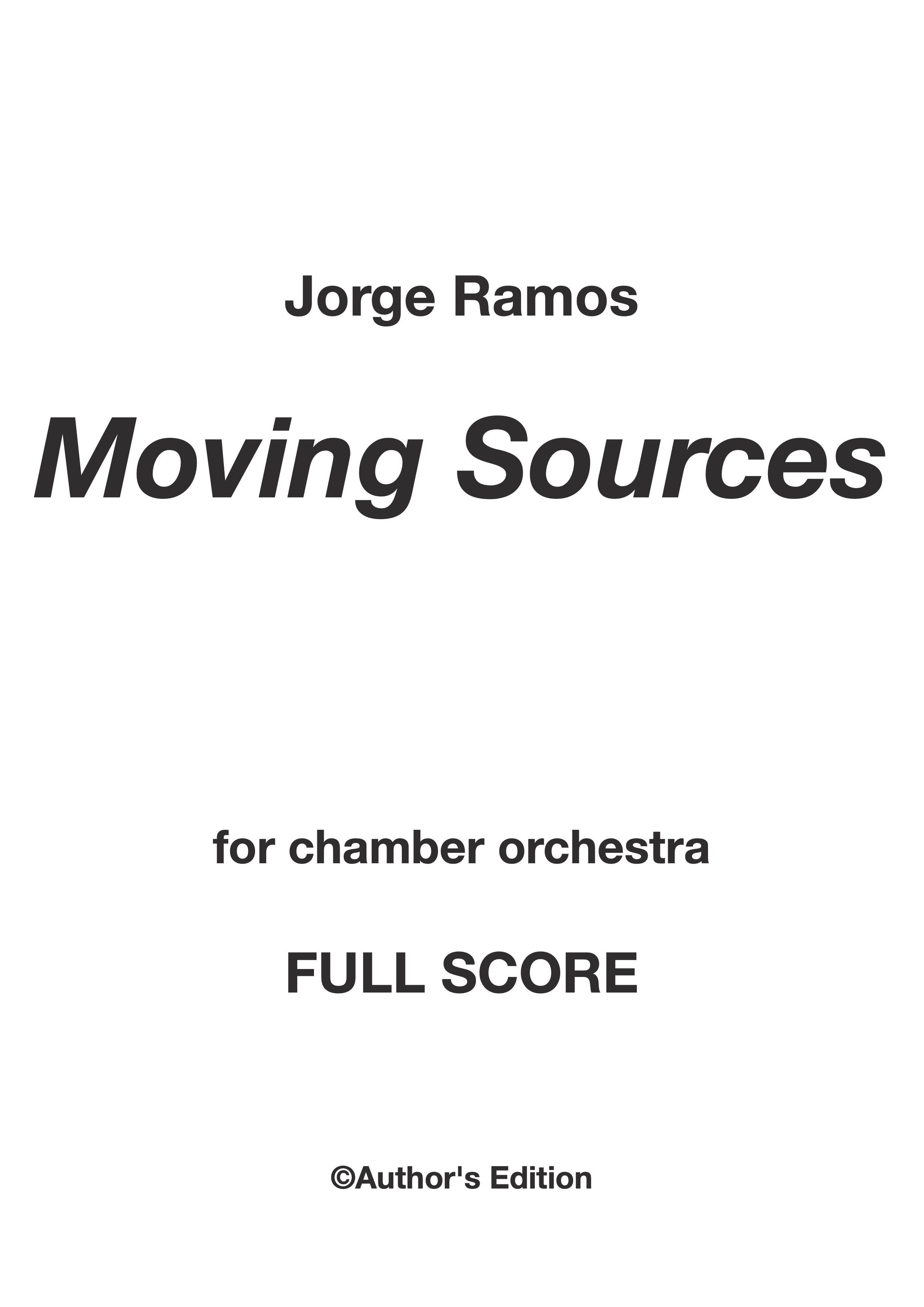 Image 1 of 7
Image 1 of 7

 Image 2 of 7
Image 2 of 7

 Image 3 of 7
Image 3 of 7

 Image 4 of 7
Image 4 of 7

 Image 5 of 7
Image 5 of 7

 Image 6 of 7
Image 6 of 7

 Image 7 of 7
Image 7 of 7








Moving Sources
Premiere
24/11/2019 - Pavilhão Centro de Portugal (PT) - Orquestra Clássica do Centro and Conductor Jan Wierzba
Awards
Honourable Mention at the Francisco Martins Composition Prize 3rd Edition by Orquestra Clássica do Centro
Research
Web Article at The ACTOR Project | Published on the 14th of June 2021
Programme notes
In this work, I - the composer - explore the role of spatialization and timbre blending as the main driving force to influence my orchestration approach. My departure point was to translate the concept of wind chimes as a physical instrument and their properties to orchestral music. All the pitch material was extracted from a sample recording of this instrument and then laid out to achieve a flowing harmonic progression that would take over the pitch development throughout the piece. Furthermore, wind-chimes are an instrument that if left alone it can be played by himself (with the natural stimulus of the wind) in a constant and almost generative ambient-like style. In addition to this, there is also a very important spatial property where each bell/chime is in constant movement, and also as a whole, all the bells move between themselves. In the end, this resulting harmonic progression and the idea of the movement of parts but also as a whole had a huge impact on my writing of this specific work.
Written in 2019 as part of my Doctor in Music — Composition at the Royal College of Music, London (EN). With the support of the Calouste Gulbenkian Foundation (PT) & Royal College of Music London (EN).
© PRS/MCPS/SPA ISWC T-931.224.048-5
Are you performing this work? Submit your performance details to be featured in the upcoming events!
Scroll down for recording ↓
Premiere
24/11/2019 - Pavilhão Centro de Portugal (PT) - Orquestra Clássica do Centro and Conductor Jan Wierzba
Awards
Honourable Mention at the Francisco Martins Composition Prize 3rd Edition by Orquestra Clássica do Centro
Research
Web Article at The ACTOR Project | Published on the 14th of June 2021
Programme notes
In this work, I - the composer - explore the role of spatialization and timbre blending as the main driving force to influence my orchestration approach. My departure point was to translate the concept of wind chimes as a physical instrument and their properties to orchestral music. All the pitch material was extracted from a sample recording of this instrument and then laid out to achieve a flowing harmonic progression that would take over the pitch development throughout the piece. Furthermore, wind-chimes are an instrument that if left alone it can be played by himself (with the natural stimulus of the wind) in a constant and almost generative ambient-like style. In addition to this, there is also a very important spatial property where each bell/chime is in constant movement, and also as a whole, all the bells move between themselves. In the end, this resulting harmonic progression and the idea of the movement of parts but also as a whole had a huge impact on my writing of this specific work.
Written in 2019 as part of my Doctor in Music — Composition at the Royal College of Music, London (EN). With the support of the Calouste Gulbenkian Foundation (PT) & Royal College of Music London (EN).
© PRS/MCPS/SPA ISWC T-931.224.048-5
Are you performing this work? Submit your performance details to be featured in the upcoming events!
Scroll down for recording ↓